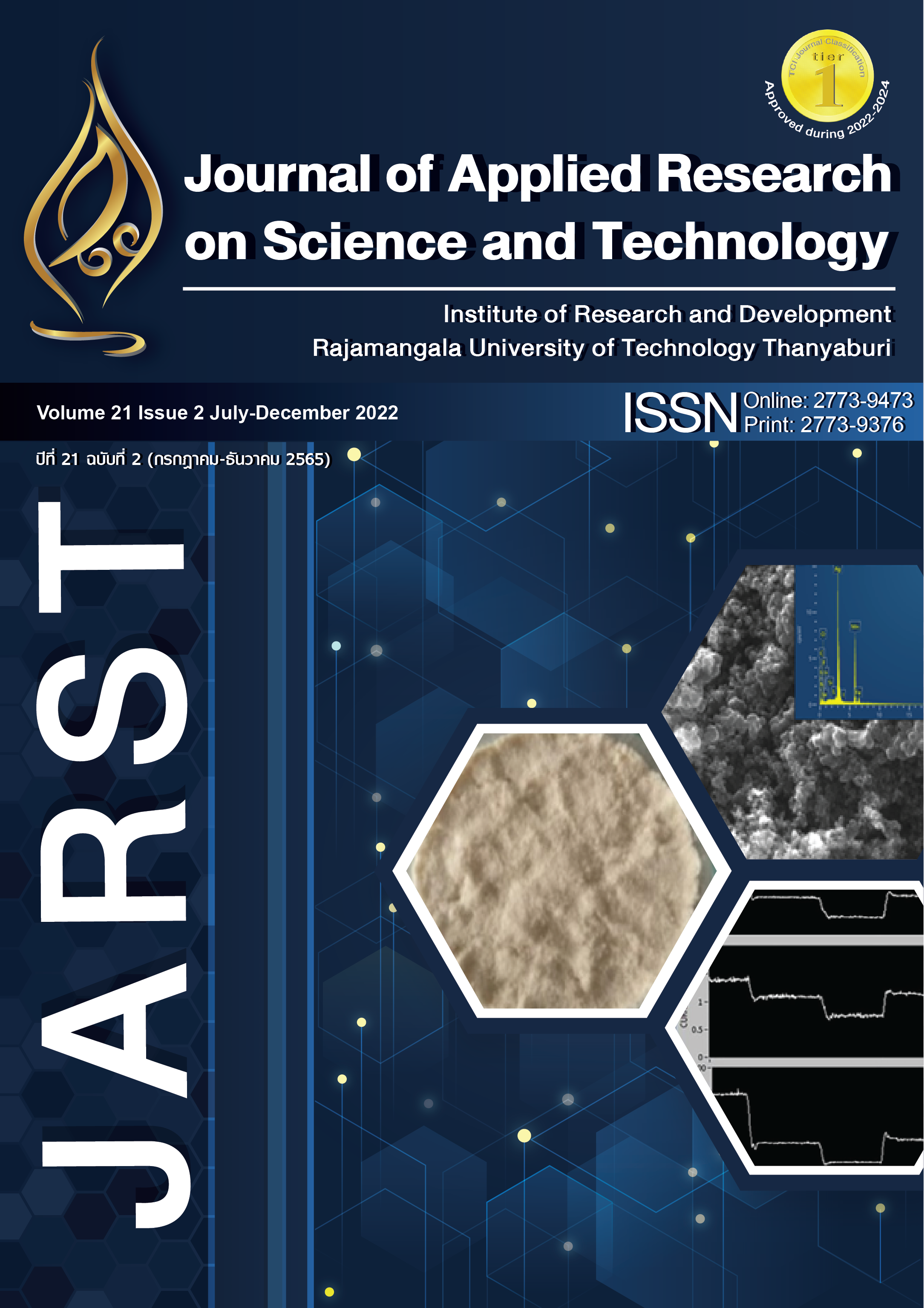Temperature and Humidity Monitoring System on Hatching Native Chickens Egg in Electric Incubator using Internet of Things Technology
Main Article Content
Abstract
This study presents the application of IoT technology for temperature and humidity monitoring on hatching native chicken eggs in an electric incubator to reduce the damage to the egg. The test group was divided into a non-tracking electric incubator (T1) and a tracking electric incubator (T2) while holding the 120 eggs/group. The data was collected on the initial egg weight (g/egg), infertility at day 7 (%), fertility at day 7 (%), embryo mortality at day 18 (%), chicks mortality at day 21 (%), hatchability (%) and crooked toes (%). The temperature and humidity data were sent to the database server every 30 min. From the results, summer temperature showed thesummer temperature was highest at 3.30 – 5.00 pm. (38 – 39.5°C) our technology notified the high-temperature alert to farmer. Then, The T2 treatment showed that the embryo mortality on day 18 (14%) was significantly less than T1 (26%) (P<0.05), and the hatchability of T2 treatment was dramatically increased (15%) (P<0.05). However, initial egg weight, infertility at day 7, fertility at day 7, chick mortality at day 21, and crooked toes were not different (P>0.05). So, the IoT technology for tracking and notifying the temperature and humidity during the hatching process showed increased efficiency in egg hatchability, coupled with the low-cost system for implementation. The farmers can use this approach to increase production efficiency and reduce problems which occurring by using electric incubators.
Article Details

This work is licensed under a Creative Commons Attribution-NonCommercial-NoDerivatives 4.0 International License.
References
Tarachai P. Poultry Farm Management [internet]. Faculty of Animal Science and Technology: Maejo University; 2017; [cited 2022 Jun 1]. Availability from: http://www.as2.mju.ac.th/E-Book/t_prapakorn.aspx. Thai.
Lee Cartwright A. Incubating and Hatching Eggs. Livestock management [Internet]. The Texas A&M University System; 2013; [cited 2022 Jun 1]. Availability from: https://aggie-horticulture.tamu.edu/organic/files/2011/02/Lee-Cartwright-Incubating-and-hatching-eggs.pdf
Luemasueni A, Smarnpituk L, Kasor S. [Research and design incubator to control temperature the egg back automatically]. YRUJST. 2017(2):39-49. Thai.
Al Sardary S, Mohammad Sh. Effect of thermal manipulation during embryogenesis on hatching traits. International J Agric Sci. 2016(1):1-6.
Kasetsuwan S. [Chicken husbandry] 5th ed. Bangkok: Kasetsart University; 1980. Thai.
The secretariat of the prime minister, royal Thai government. [Thailand 4.0 Driving the future towards stability, prosperity and sustainability]. Thai Khu Fa. 2017;33(1):2-44. Thai.
Srisongmuang P, Srisongmuang C, Budsabok S, Homsup C. [Development of smart farms in greenhouses through the embedded system]. J Appl Res Sci Tech. 2021;20(1):1-29. Thai.
Poolwan J, Sripan B, Kingthong S. [Development of automatic temperature and humidity control systems for eggs incubators with internet of thing technology]. RMUTSB Acad J. 2021;(9):225-36. Thai.
Collins KE, Jordan BJ, McLendon BL, Navara KJ, Beckstead RB, Wilson JL. No evidence of temperature-dependent sex determination or sex-biased embryo mortality in the chicken. Poult Sci. 2013;92(12):3096-102.


